- Home
- Paul Christopher
The Aztec Heresy Page 2
The Aztec Heresy Read online
Page 2
‘‘Confirmed.’’ Tynan could feel the sweat starting to form under his helmet. Not a bus anymore. A hundred tons of steel and aluminum going half the speed of sound toward a giant light socket in the sky.
‘‘Plot,’’ crackled Baumann from the navigator’s compartment in the nose. ‘‘Gonna take us ten degrees off course and then we’ll have to do a comeback. Cut into our fuel a bit.’’
‘‘To hell with that. Input the plot.’’
‘‘Yessir.’’
Suddenly they were into the outer edges of the storm, rain streaming off the canopy in a sheeting haze that made any kind of visibility impossible. The autopilot had taken the plot and Tynan could feel the oversized pedals moving under his booted feet. The sky lit up as lightning exploded directly in front of them, and Tynan felt a shock of pain lance through his forehead as the sound wave hammered them. The jet shook like a leaf.
At which point the needle valve in the outer port-side nozzle cracked and then disintegrated. The result was instantaneous. The engine exploded, tearing away from its reinforced pylon, releasing a blossoming cloud of high-octane jet fuel and immolating twenty feet of the Goose’s left wing.
Loss of power, usually on takeoff, was one of the unsolved problems with the B-47’s otherwise excellent stability record. According to the operating handbook for the bomber, a sudden loss of power, especially in the catastrophic way Mother’s Goose was experiencing, required a 1.7-second response from the pilot to apply full opposite rudder in an effort to prevent the aircraft from cartwheeling, a result of the unequal thrust of the engines on the undamaged wing; 1.7 seconds was well beyond the performance capabilities of Major Buck Tynan’s alcohol-soaked mind at the critical moment. By the time he slammed his right foot down on the rudder pedal almost a full three seconds had passed.
He fought for control but it was no use; gravity and physics were having their way with Mother’s Goose. The end result was inevitable and everyone on the bomber knew it. All three members of the crew reacted instinctively.
In the nose section Baumann grabbed the bicycle brake levers on the right side of his seat and squeezed. The powder charge under the seat blew out the hatch beneath the seat’s swivel mechanism and the navigator was sucked out into the darkness.
Unfortunately the harness mechanism on the ejection seat’s parachute was torn out of place as the seat was sucked downward. Baumann, screaming all the way down, hurtled thirty seven thousand feet into the dark coastal waters a mile or so off the Yucatán Peninsula without anything to slow his descent. By that time the seat, and Baumann strapped securely into it, had reached terminal velocity. The water’s surface had the consistency of granite, and Baumann disintegrated on impact.
Wally Meng didn’t fare much better, even though he followed emergency ejection procedures to the letter. He made sure his safety harness was tight, checked to make sure the shoulder harness lock connector was secure, then reached across with his right hand to hit the quick disconnect on the air and communication cables.
Finally he gripped the catapult firing initiator and squeezed. The three powder charges blew in sequence and the chair rocketed upward at eighteen g’s of force. His only mistake was his quick reaction. The unlucky copilot assumed that Tynan had already ejected, which was not the case.
The canopy over Wally Meng’s head was still intact and in place above him—a curving sheet of high-impact plastic. Meng’s helmet smashed into the canopy, cracking both canopy and helmet, the force of impact fracturing Meng’s skull like an egg splitting on the side of a cast-iron frying pan. Meng’s head, held together now by nothing more than the ruined helmet, was forced up through the canopy and into the four-hundred-mile-an-hour winds that raged across the plastic cowling.
Meng’s virtually unprotected neck was bent back by the force of the wind and sawed against the shattered plastic, sending the severed head out into the darkness of the night, spinning away like a gleaming bowling ball and disappearing into the slashing rain.
Tynan eventually came to his senses, getting the jet into some kind of vague control, fighting the pedals and staring at instruments on his panel that were either blinking red or flickering out as the heavy rains swept in through the shattered canopy and shorted everything out.
Things were made even worse by the thick smoke from the ejection-seat charges and the pumping blood spraying up from Wally Meng’s headless corpse, still strapped into the smoldering chair. His last glimpse of the altimeter showed that the Goose was down to less than two thousand feet and the artificial horizon was showing an amazingly shallow dive.
The engine fire was out but there was no hope for the bomber. The Goose was cooked no matter what. At two thousand feet, shallow dive or not, they were going to impact in the next few seconds. He checked his harness, blew the canopy, closed his eyes, and said one extremely dirty word that would definitely have shocked his wife if he’d had one. Then he squeezed the trigger and flew up into the dark, rain-filled sky above the jungles of the Yucatán.
THE PRESENT
3
Finn Ryan sat on a hard bench in one of the immense reading rooms of the General Archives of the Indies in Seville, Spain, while her business partner and friend, Lord Billy Pilgrim, went over yet another yellowed piece of parchment with a Sherlock Holmes-sized magnifying glass. Before Finn was an open laptop, two technologies side by side separated by five hundred years.
‘‘You’d think the monks who transcribed these things would have had better penmanship, ’’ grumbled Billy, bent low over the manuscript.
‘‘You’re the one who took Spanish literature at Oxford,’’ Finn said and smiled.
‘‘Literature, not laundry lists,’’ said Billy. ‘‘Which is exactly what these chicken scratchings are. Cargo lists, passenger lists, bills of lading, memos from one bureaucrat to another on the state of the sugar industry. It’s bloody boring, it is.’’
‘‘As Indiana Jones says in The Last Crusade, ‘Most of archaeology is done in the library.’ ’’
‘‘Bugger Indiana Jones,’’ responded her blond companion. ‘‘You didn’t see him sitting about peering at old bits of parchment in dusty rooms in a mausoleum of a place like this. He ran about cracking his whip, fighting off rats and snakes and shooting people. Much more fun, if you ask me.’’
‘‘Give me the dusty rooms any day,’’ answered Finn. ‘‘I’ve had enough of the other to last me for a while.’’
‘‘I suppose you’re right,’’ agreed Billy. Their last adventure had seen them attacked in the Underground in London, his boat blown out of the water in an Amsterdam marina, their lives almost forfeit in a China Sea typhoon, and being cast away on a desert island off the northern coast of Borneo with the descendants of a crew of ancient Chinese warriors. And that was just the beginning of their troubles.
‘‘Getting back to what we’re here for, what do the old memos and bills of lading say about the Nuestra Señora de las Angustias?’’ Finn asked.
‘‘That she was caught in a hurricane in the middle of July in 1521 and sank like a stone in the waters just off Key West, which they called Cayo Hueso back then—Island of Bones. Six months later a salvage ship, the Nuestra Señora de la Concepción, otherwise known as Cagafuego by her crew, was sent from Havana to salvage the treasure, which was considerable.’’
‘‘Cagafuego?’’ Finn said.
‘‘Roughly translated it means ‘Fireshitter,’ if you must know.’’
‘‘Forget I asked,’’ replied Finn. ‘‘What happened then?’’
‘‘They salvaged just about everything, which is why the wreck has been ignored; there’s nothing on it. They also managed to pick up a survivor from the original ship, the Nuestra Señora de las Angustias. A fellow named Friar Bartolome de las Casas, a Dominican. The name pops up a number of times. He must have been quite important.’’
‘‘I wonder if it’s a coincidence,’’ Finn said.
‘‘Coincidence?’’
‘‘My fat
her used to talk about someone with the same name all the time when he was on his digs in Mexico and Central America when I was a kid,’’ she explained. ‘‘That Bartolome de las Casas was a Dominican as well. He was one of the friars who invaded Mexico with Cortéz; in fact, he was confessor to Cortéz, knew all his secrets, including the location of the hidden temple in the Yucatán where Montezuma hid the bulk of his treasure. Cortéz was afraid that the royal court back in Spain was setting him up as a heretic with the Inquisition just to steal the gold and jewels, so he never told anyone where this mythical city was. Everyone in the Mexican colony searched for it for more than a hundred years and then it was forgotten, turned into myth, cursed, in fact.’’ Finn shrugged. ‘‘There was supposed to be some Codex involved but that’s turned into a myth as well.’’
‘‘Codex?’’
‘‘They were books, sort of, long accordion-folded strips full of Aztec pictograms painted on amatl paper—pounded fig bark. One of the most famous is the Florentine Codex. The Spanish Inquisition tried to have it destroyed and almost succeeded. Another one is the Boturini Codex, which was written by an unknown Aztec only a decade or so after the conquest by Cortéz. There are about a dozen of them all told. They’re spread all over the place now. Princeton, the National Library in Paris, a library in Florence.’’
‘‘How about the Vatican?’’ Billy asked, staring through the magnifying glass at the faded parchment in front of him.
‘‘One of the most famous, the Codex Borgia. Why?’’
‘‘This manuscript keeps on mentioning something called the Cavallo Nero and the Vatican, along with the phrase ‘Tira de la Ciudad Dorado de Cortéz’—Strip Concerning Cortéz’s City of Gold. Could that be one of these Codex things you seem to know so much about?’’
‘‘It sounds like it. Cavallo Nero is Italian. It means Black Knight, as in the chess piece,’’ Finn said and nodded, excitement rising in her voice.
‘‘Some sort of secret society?’’
‘‘I wouldn’t be surprised,’’ said Finn. ‘‘Especially if it involves the Dominicans. They were the driving force behind the Inquisition. Always snooping around. Sort of a religious Gestapo. Fifteenth-century Homeland Security.’’
‘‘But that’s Spain, not Rome,’’ Billy said.
Finn shook her head. ‘‘Everyone thinks the Inquisition originated in Spain. It didn’t. It started in the Vatican. Pope Sixtus the Fourth, the man who built the Sistine Chapel and re-founded the Vatican Library. The Inquisition still exists, except now it’s called the Congregation for the Doctrine of the Faith. It’s the oldest department in the Vatican.’’
‘‘The Black Knights. Sounds ominous,’’ said Billy.
‘‘If they were Dominicans and they were involved in the Inquisition, they probably weren’t the good guys, that’s for sure,’’ agreed Finn. She drummed her fingers on the table in front of her. ‘‘I wonder if it’s still there,’’ she murmured.
‘‘What’s still where?’’
‘‘The Tira de la Ciudad Dorado de Cortéz,’’ said Finn. ‘‘I wonder if it’s still in the Vatican Library.’’
‘‘Maybe it never got there,’’ answered Billy almost hopefully.
‘‘The City of Gold,’’ said Finn, her voice slow. ‘‘My father always believed it existed. It was his Holy Grail.’’
‘‘I thought Sir Galahad found the Holy Grail, then Monty Python, and then Dan Brown.’’
‘‘You forgot Indiana Jones,’’ said Finn absently.
‘‘You’ve got quite a thing for him,’’ said Billy. ‘‘Or is it Harrison Ford?’’
‘‘Ssshh,’’ whispered Finn. ‘‘I’m thinking.’’
Billy Pilgrim shifted uneasily on the hard wooden bench. ‘‘Why is it I get this terrible feeling of impending doom?’’ he asked.
‘‘Don’t be such an old fuddy-duddy.’’ Finn laughed. ‘‘Let’s go find the Seville version of a Starbucks and talk about this City of Gold.’’
Twenty minutes later a young man in an open-neck white shirt and jeans strolled into the Plaza de la Alianza. He was carrying a small video camera in his hand. He looked like a tourist, which, in a sense, was exactly what he was.
The plaza was small and intimate, one side taken up completely with the crumbling brick and stone rear of the church that sat on the street parallel to the plaza. The other three sides of the patterned stone square were taken up with small businesses, including a Starbucks on one corner. Small orange trees had been planted for shade around the square and were all bearing bright orange fruit.
In the center of the square was a small simple fountain of the kind you could see in a thousand squares like the plaza, which could be found throughout the city. There were tables and chairs lined up against the wall of the old church, and the young man sat down and began to swing his camera in a slow pan around the square.
He seemed to pay particular attention to the Starbucks, which occupied the main floor of a two-storied whitewashed building. He zoomed in and held on a couple seated at one of the café tables in front of the coffee shop. He carefully zoomed closer, then held the shot until he was sure he had enough footage of the couple. They were talking together quite earnestly. The man was blond with the body of a swimmer, broad-shouldered and narrow-hipped. The woman was slim with long red hair, as beautiful as a Pre-Raphaelite painting of The Lady of Shalott.
The young man in the white shirt panned around the plaza a second time, just for effect, and then put the camera down on the little table in front of him. He took a cell phone out of the pocket of his shirt, he dialed the international telephone code, the Italian country code, and finally the 379 area code. He entered a seven-digit number. It was answered on the third ring.
‘‘Yes?’’ The language was Italian, the tone careful and considered. A voice with power behind it.
‘‘I have them,’’ the young man in the plaza answered. ‘‘Our contact in the Archives of the Indies said they have been looking for references that include information about the Codex.’’
‘‘Interesting,’’ said the man on the other end of the call. ‘‘That makes two interested parties in the past month.’’
‘‘What shall I do?’’ asked the man in the white shirt.
‘‘Nothing. Keep them under surveillance for the time being.’’
‘‘Yes, Your Eminence.’’
‘‘The opening moves have begun,’’ said the voice. ‘‘We are in play again after a very long time. We must be patient now.’’
‘‘Yes, Your Eminence.’’
‘‘If they become too curious, remove them from the board. Keep me advised.’’
Remove them from the board, thought the young man. In other words, kill them.
The cell phone went dead in the young man’s ear. He put the phone back in his shirt pocket and watched the couple outside the Starbucks. He inhaled the sweet fragrance of the orange trees and began to pray for the souls of the couple at the table beyond the fountain.
4
Max Kessler lived at 3307 N Street NW in Georgetown, Washington, D.C., two doors down from the corner of Thirty-third Street and two blocks north of the shops and restaurants of M Street. The house was one of those rare addresses in Georgetown: a single-family dwelling on its own plot of ground. For Max Kessler this was the best feature of the residence; the thought of sharing a wall with another building almost made him nauseous.
Its other great attraction was the fact that it had been occupied by Jack Kennedy from 1958 until his ascension to the White House. Sometimes late at night, when Max did some of his best sorting and shifting, he was sure that he could hear the faint voices of Jack and Jackie in conversation or smell Jackie’s Creed’s Fleurissimo perfume, the scent created for Grace Kelly. Sometimes he was equally sure he could smell the rich smoke from the short-lived president’s cigars. In every other way a practical and phlegmatic man, Maxmillian Alois Kessler fully believed that his house was haunted by the spirits of these two great
Americans.
Max Kessler was born in the Gasthaus Monika in the southern Bavarian mining town of Miesbach, Germany. The date of his birth was April 30, 1945, the same day Adolf Hitler put a gun to his head and committed suicide in Berlin. Max’s father called himself Kurt Von Kessler, although he had no right to use the term of nobility.
Kurt Von Kessler, noble or not, was a colonel in the SS and senior assistant to Reinhard Gehlen, the Nazi staff officer and intelligence chief who had been in charge of all espionage activities within the Soviet Union during the course of World War II.
As the war wound down in Germany, Gehlen the spymaster and his organization moved into the Bavarian Alps to wait for the Americans to arrive, which accounted for Max’s rural birth. When Gehlen and his group were hired on by the fledgling CIA, Kurt Kessler, minus the ‘‘Von,’’ was brought to America along with his wife and child under the notorious Operation Paperclip, which saw hundreds of Nazis brought to America during the immediate postwar years, some of them who could only be described as war criminals.
Kurt Kessler, along with his old boss Gehlen, settled in Washington, D.C., and became a specialist in South American and Central American intelligence gathering, since he had many contacts with scores of old friends who were now living there.
Kurt’s son, Max, was raised as an American, went to American schools, and graduated from Georgetown University with high honors, specializing in South American affairs and languages. He then took a postgraduate degree in Soviet political science. He spoke English, Spanish, Portuguese, Russian, and Czech with equal and perfect fluency. Of course, he also spoke the High German of his father like a native Berliner.
His mother and father were killed in an automobile accident in 1968 just after he obtained his postgraduate degree. Within two weeks of burying his parents, Max was recruited by the Central Intelligence Agency.
He turned down the offer, preferring to maintain both his autonomy and his privacy, and set himself up as a consultant working as a broker between American and South American business interests and as a private advisor on Soviet affairs, specializing in trade agreements with Eastern Bloc countries.

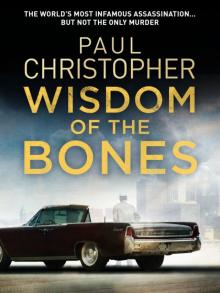 Wisdom of the Bones
Wisdom of the Bones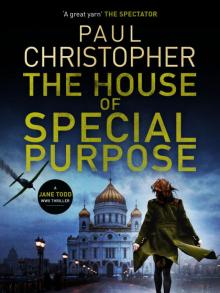 The House of Special Purpose
The House of Special Purpose The Second Assassin
The Second Assassin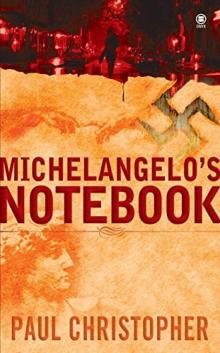 Michelangelo's Notebook
Michelangelo's Notebook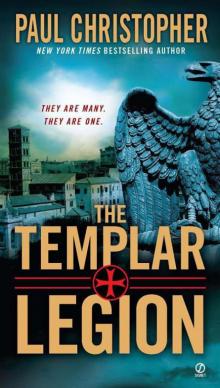 Templar Legion
Templar Legion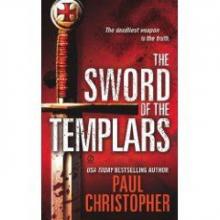 The Sword of the Templars t-1
The Sword of the Templars t-1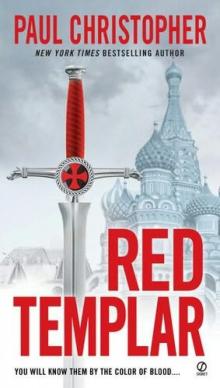 Red Templar
Red Templar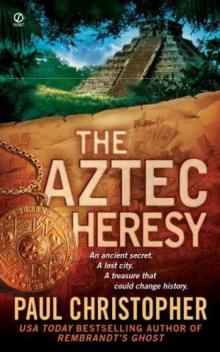 The Aztec Heresy
The Aztec Heresy The Templar Legion
The Templar Legion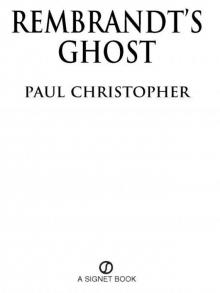 Rembrandt's Ghost
Rembrandt's Ghost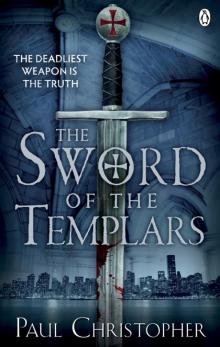 Sword of the Templars
Sword of the Templars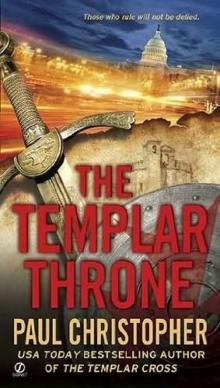 The Templar throne t-3
The Templar throne t-3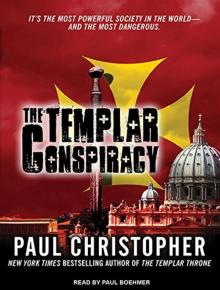 The Templar Conspiracy
The Templar Conspiracy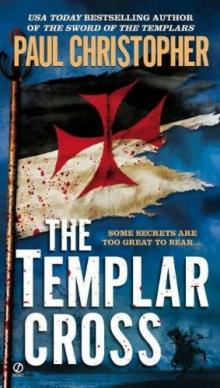 The Templar Cross t-2
The Templar Cross t-2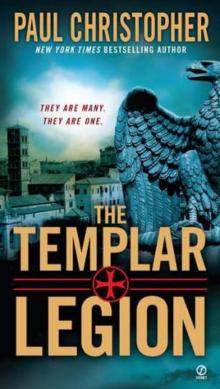 The Templar Legion t-5
The Templar Legion t-5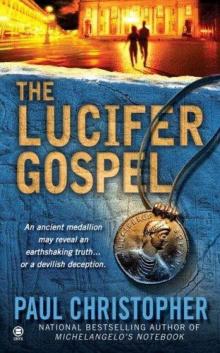 The Lucifer Gospel
The Lucifer Gospel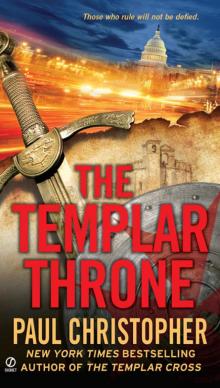 Templar Throne
Templar Throne Michelangelo_s Notebook fr-1
Michelangelo_s Notebook fr-1 The Lucifer Gospel fr-2
The Lucifer Gospel fr-2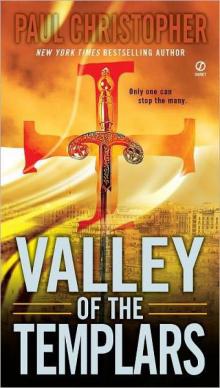 Valley of the Templars ts-7
Valley of the Templars ts-7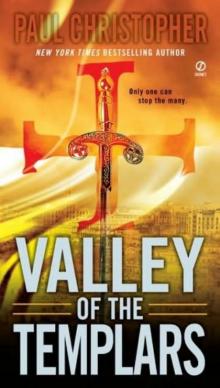 Valley of the Templars
Valley of the Templars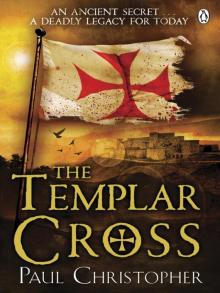 Templar Cross
Templar Cross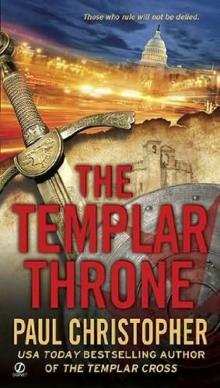 The Templar Throne
The Templar Throne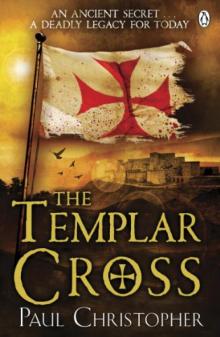 The Templar Cross
The Templar Cross Lost City of the Templars
Lost City of the Templars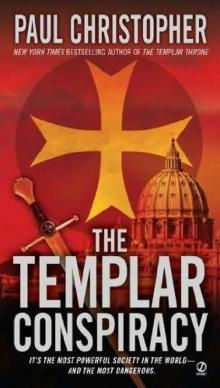 The Templar conspiracy t-4
The Templar conspiracy t-4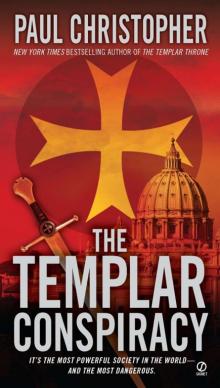 Templar Conspiracy
Templar Conspiracy